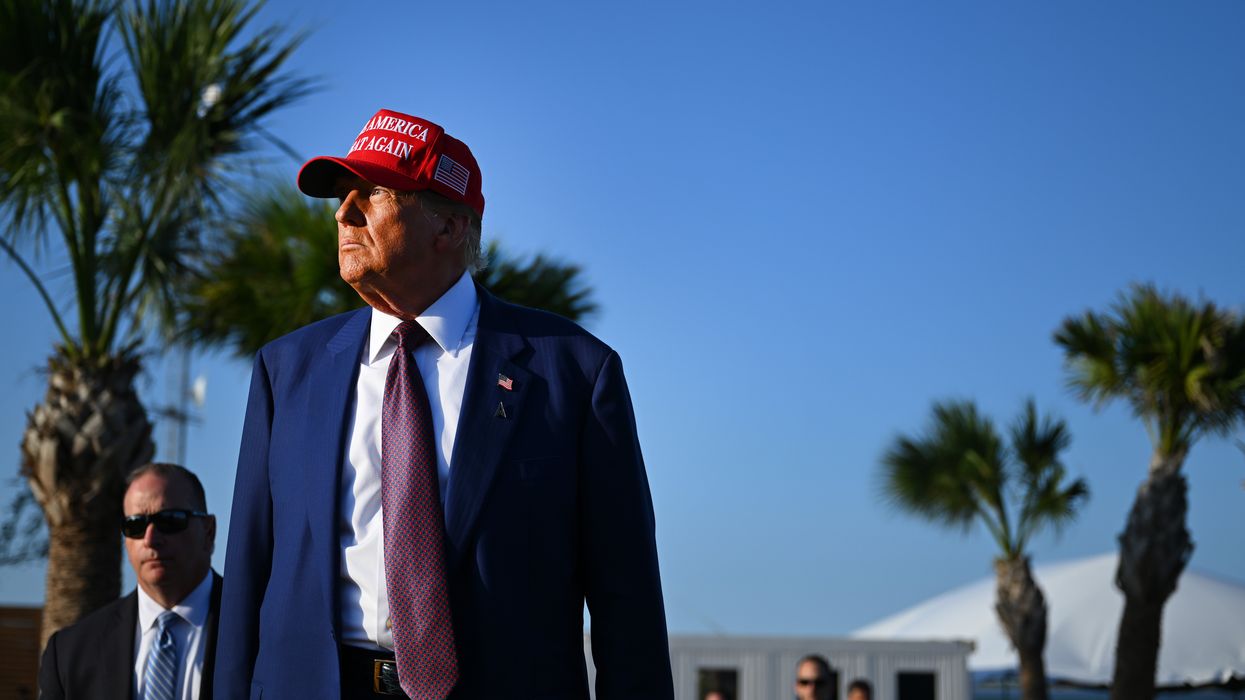Sometimes, it turns out that two wrongs do make a right. In politics, a steadfast commitment to doing the morally right thing disadvantages the victims of lawlessness and injustice.
The famous Italian political thinker, Niccolo Machiavelli, captured this political imperative in 1532, when he explained that “a man who wants to act virtuously in every way necessarily comes to grief among so many who are not virtuous. Therefore, if a Prince wants to maintain his rule, he must be prepared not to be virtuous, and to make use of this or not according to need.”
Public officials in blue states who are experiencing the effects of the Trump administration’s cavalier attitude toward the law are beginning to learn Machiavelli’s lesson. On June 29, NBC News reported that “Democratic legislators…are attempting to fight back against President Donald Trump’s efforts to withhold funding from their states with bills that aim to give the federal government a taste of its own medicine.”
“The novel and untested approach,” NBC went on, “would essentially allow states to withhold federal payments if lawmakers determine the federal government is delinquent in funding owed to them.”
Whether this ploy would pass constitutional muster remains to be seen. But, in the meantime, it offers states, that the Trump administration wants to punish, a way to fight back.
They should not miss this opportunity to assert state sovereignty and protect the residents of blue states from the wrath of a president who sees himself as the president of the Red States of America. His first-term record made that abundantly clear.
As the Atlantic’s Ronald Brownstein put it, “During his term in the White House, Donald Trump governed as a wartime president—with blue America, rather than any foreign country, as the adversary. He sought to use national authority to achieve factional ends—to impose the priorities of red America onto Democratic-leaning states and cities.”
Nothing has changed since the president began his second term. In fact, he has doubled down on his attacks on Democratic governors and mayors who lead places that he did not carry in November 2024.
California is a prime example. During January’s wildfires that ravaged parts of Los Angeles, the president took every opportunity to blast Governor Gavin Newsom and Mayor Karen Bass.
When he did act, he used the LA fires as an excuse to direct federal aid, not to the city, but to parts of California where he has political allies. The president “ordered federal agencies to immediately deliver more water—not to Southern California, but to the Central Valley hundreds of miles away, where agribusiness stands to profit.”
In response to demonstrations against his aggressive and indiscriminate deportation policy, Trump deployed the National Guard and a contingent of Marines in Los Angeles. He ignored the objections of Newsom and Bass and blamed them for what he called rampant lawlessness.
Following the agenda of the misbegotten Department of Government Efficiency, the administration, acting without Congressional authority, froze funds due to be paid by the federal government to states and took other punitive actions, seeming to again target blue states and cities. And where such actions were applied across the board, it is clear that they would have a disproportionate impact in blue states.
Examples include the closure of Department of Health and Human Services offices in Boston, Chicago, New York City, San Francisco, and Seattle. See any pattern here?
New York, Vermont, and California have also been singled out by the president for their efforts to mitigate climate change. In an executive order issued in April, he claimed, “These State laws and policies weaken our national security and devastate Americans by driving up energy costs for families coast-to-coast, despite some of these families not living or voting in States with these crippling policies.”
He offered no evidence to support those assertions.
Nonetheless, he recited a list of blue state trigger words and directed Attorney General Pam Bondi to “prioritize the identification of any such State laws purporting to address ‘climate change’ or involving ‘environmental, social, and governance’ initiatives, ‘environmental justice,’ carbon or ‘greenhouse gas’ emissions, and funds to collect carbon penalties or carbon taxes…[and to] expeditiously take all appropriate action to stop the enforcement of State laws.”
Until now, litigation has been the primary tool states have used to fight such discriminatory treatment.
However, as NBC News notes, legislators in places like Connecticut, Maryland, and New York are trying to open up a new way of responding. They have introduced bills to allow their states to respond by holding back payments to the federal government when the Trump administration “illegally withholds money from them for things like health care, food assistance, and environmental protections.”
This is the political equivalent of fighting fire with fire. Machiavelli would be proud.
NBC quotes David Moon, the Democratic majority leader in Maryland’s House of Delegates, who observed, “Trump is illegally withholding funds that have been previously approved. Without these funds, we are going to see Maryland residents severely harmed—we needed more options on the table for how Maryland could respond and protect its residents.”
As former Judge Nancy Gertner and two of her co-authors explain, “Federal taxes are largely collected by employers. In Massachusetts and California, the state is a major employer and could refuse to send tax dollars to the federal government. They also could mandate their local municipalities to follow suit.”
From time to time, states have invoked “states’ rights” to justify non-compliance with federal policies. But what Rep. Moon is describing is not that.
He simply wants the federal government to do what it is legally obliged to do and to recognize that it has an obligation to treat states equally unless it can demonstrate that it has a good reason not to. Partisan disagreements or political retribution are not one of them.
And we know that in terms of net revenue flows, residents and businesses in states like Massachusetts, New Jersey, Washington, and California pay more to the federal government through taxes than they receive in benefits and payments from Washington, D.C.
Withholding funds from the federal government is not a step to be taken lightly. Such efforts would surely be challenged in court and in the court of public opinion by the Trump administration.
They would tell judges that “the U.S. Constitution’s supremacy clause clearly gives the federal government precedence over states.” And they would tell the public that by withholding funds, blue states are engaging in lawless behavior.
Gertner and her colleagues caution that “a blue state boycott of federal taxes would be unlawful just as are many of Trump’s shakedowns.” That statement frames the problem.
As one after another of the guardrails and restraints on the administration fall by the wayside, its political opponents will almost certainly be the victims of more and more shakedowns. Remember Machiavelli.
In confronting and resisting the Trump administration, all of us, state government officials included, need to be inventive and courageous. Withholding funds from the federal government is one example of such inventiveness and courage.
It is well worth doing, even if it means following the advice of a sixteenth-century political strategist.
Austin Sarat is the William Nelson Cromwell professor of jurisprudence and political science at Amherst College.



















